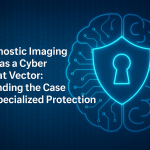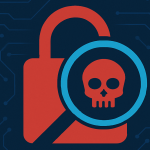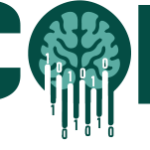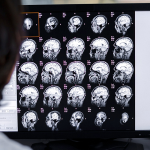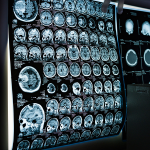SecureDICOM from Wetstone Labs is a specialized cybersecurity solution designed to protect medical imaging files, specifically those in Digital Imaging and Communications in Medicine (DICOM) format, from becoming vectors for cyber threats. By integrating advanced security measures tailored to the unique structure of DICOM files, SecureDICOM protects the integrity of this critical healthcare data. This robust protection is crucial for maintaining continuity in healthcare operations and safeguarding sensitive patient information.
SecureDICOM’s alignment with the National Institute of Standards and Technology (NIST) Cybersecurity Framework (CSF) can be analyzed through the framework’s five core functions: Identify, Protect, Detect, Respond, and Recover. Each function is critical in shaping a robust cybersecurity strategy that addresses the unique needs and challenges faced by healthcare organizations, particularly in protecting medical imaging files like DICOM. The following discusses how SecureDICOM relates to each component of the NIST CSF.
1. Identify
The Identify function aims to develop an organizational understanding to manage cybersecurity risk to systems, assets, data, and capabilities. SecureDICOM contributes to this function by providing healthcare organizations with tools to identify the specific vulnerabilities associated with DICOM files. This includes the unique risks posed by the complex structure of these files, which may harbor malware in ways not typically detectable by standard antivirus solutions. SecureDICOM’s capabilities enable organizations to better understand and manage cybersecurity risks specific to medical imaging data.
2. Protect
The Protect function focuses on developing and implementing appropriate safeguards to ensure the delivery of critical services. SecureDICOM enhances this function by offering specialized protection measures tailored to the DICOM file format. This includes security-based structural checks against DICOM standards and customized malware detection algorithms that go beyond traditional signature-based methods. These measures ensure the integrity of medical imaging files is maintained, preventing unauthorized manipulation and the potential for these files to act as carriers for malware. Such protection is crucial in preventing disruptions to critical healthcare operations and safeguarding patient data privacy.
3. Detect
Under the Detect function, organizations are encouraged to develop and implement activities to identify the occurrence of a cybersecurity event. SecureDICOM aids this function through its monitoring of DICOM files on Picture Archiving and Communication System (PACS) servers and other protected endpoints for signs of potentially malicious manipulation or embedded malware, including the use of advanced data hiding techniques such as steganography. This proactive detection is crucial for healthcare organizations, where early identification of threats can prevent significant disruptions and potential breaches of patient data.
4. Respond
The Respond function involves developing and implementing activities to address a detected cybersecurity incident. In the context of SecureDICOM, this could involve immediate isolation of affected DICOM files and the generation of alerts that trigger activation of incident response protocols specifically designed for scenarios involving medical imaging data. SecureDICOM’s detailed analysis and reporting capabilities provide critical information to cybersecurity teams, aiding them in delivering timely and effective responses to incidents.
5. Recover
The Recover function emphasizes restoring services and capabilities impaired due to a cybersecurity incident, aiming to minimize downtime and ensure a swift return to normal operations. SecureDICOM supports this function by isolating affected DICOM files quickly, thereby preventing further spread and facilitating targeted recovery efforts. It also provides detailed logs and analyses of the incident, which help IT teams pinpoint the specifics of the compromise. This enables more focused and efficient recovery strategies, helping to expedite the restoration process and reduce the overall impact on healthcare operations.
Implementation and Integration
SecureDICOM supports the NIST Cybersecurity Framework’s Implementation Tiers through adaptable deployment models—cloud-based, on-premises, and hybrid—and robust integration capabilities. The flexibility to deploy SecureDICOM within existing infrastructure models, and adapt as those architectures evolve, is complemented by:
- API Integration: This ensures seamless interoperability with existing healthcare systems and applications, enhancing communication and data handling across various IT setups.
- Agent-Based Monitoring: Agents installed on PACS servers and other healthcare endpoints provide continuous, real-time monitoring and protection of DICOM files, crucial for immediate threat detection and response.
- UI-Based Submission: This allows for the manual submission of DICOM files via a user interface, ideal in situations where batch scanning or automated processes are not suitable, giving users direct control over specific file uploads for immediate security checks.
These deployment and integration methods collectively enable SecureDICOM to enhance the cybersecurity measures of healthcare organizations, ensuring they can effectively progress through the NIST CSF tiers with a cybersecurity posture that is both robust and adaptable to user needs.
Conclusion: Framework Profile Alignment
SecureDICOM’s capabilities are closely aligned with the NIST Cybersecurity Framework (CSF), enabling healthcare organizations to meet specific cybersecurity outcomes tailored to their needs. By mapping its features to the various subcategories within the CSF, SecureDICOM facilitates adherence to both broad and precise security requirements. This alignment ensures that organizations can follow industry best practices and comply with regulatory standards, such as those mandated by HIPAA. As a cybersecurity solution designed to detect the malicious manipulation of DICOM files, SecureDICOM effectively addresses the complex challenges associated with healthcare security and the exploitation of these ubiquitous medical imaging files as vectors for cyber threats. This specialized focus complements the strategic, high-level approach to cybersecurity risk management promoted by the NIST CSF, making SecureDICOM an indispensable tool for healthcare organizations seeking to implement the CSF effectively.
For more information about Wetstone, SecureDICOM, and our other cybersecurity and digital forensics solutions, please contact us at sales@wetstonelabs.com. Visit our website at www.wetstonelabs.com and follow our LinkedIn page at www.linkedin.com/company/wetstone-technologies.
WetStone Labs, WetStone Technologies, and SecureDICOM are trademarks of WetStone Labs, Inc. All other product names mentioned herein are used for identification purposes only and may be the trademarks of their respective manufacturers or publishers.

